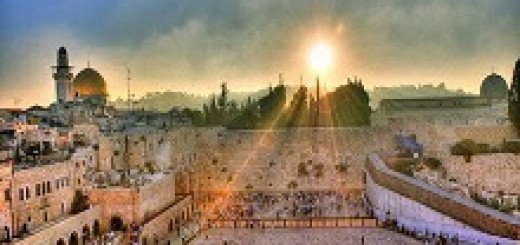By Rabbi Dovid Markel
The parsha of Shoftim discusses the six Cities of Refuge that were to be established as a sanctuary and place of escape for a person who accidentally killed his fellow without malice.
After the verse explains the stipulations for which a person may find shelter in one of these cities and describes where these cities should be placed, the verse[1] states:
“And when the Lord, your G-d, expands your boundary, as He swore to your forefathers, and He gives you all the land of which He spoke to give to your forefathers; if you will keep all this commandment to perform it, which I command you this day, to love the Lord, your G-d, and to walk in His ways all the days, you shall add three more cities for yourself, in addition to these…”
G-d swore that He would give to the Jewish People “the land of the Kenites, the Kenizzites, and the Kadmonites[2].” Though this land has yet to be in the possession of the Jewish People, when it will become part of the Land of Israel, the Jewish People will have the commandment of adding additional three Cities of Refuge in that territory.
Proof for Moshiach
Rambam[3] explains that this commandment serves as a proof for the coming of Moshiach:
“In the future, the Messianic king will arise and renew the Davidic dynasty, restoring it to its initial sovereignty. He will build the Temple and gather the dispersed of Israel… Anyone who does not believe in him or does not await his coming, denies not only the statements of the other prophets, but those of the Torah and Moshe, our teacher. The Torah testified to his coming… with regard to the cities of refuge, Devarim, 19:8-9 states: ‘When G-d will expand your borders… you must add three more cities.’ This command was never fulfilled. Surely, G-d did not give this command in vain.”
From the fact that G-d did not command in vain and this episode is yet to pass, it is therefore clear that the Messianic era will indeed come.
Moshiach and Refuge
Nothing in the Torah is happenstance and random. It is therefore clear that if the Torah eludes to the Messianic era with the Cities of Refuge, it is because the two are intrinsically linked and there is a conceptual connection between both ideas.
It therefore must be understood: what is the connection between the time of Moshiach and the Cities of Refuge?
Physical and Spiritual Refuge
The connection between the Messianic era and the Cities of Refuge can be understood both practically and spiritually.
In a practical sense, the Cities of Refuge served as a place of protection and relief from the “avenger of the blood.” When a person murdered someone, even accidentally, it was possible that the relative of the deceased would desire to avenge the death of his family member. If, however, the murderer was found in one of these Cities of Refuge, the avenger was prohibited from killing the murderer.
The physicality of the world is defined by time and space. Just as there were Cities of Refuge that occupied space, so too, is there a concept of refuge that occupies the parameters of time. This is the time of Moshiach.
The time of Moshiach is a “refuge” from all forms of negativity, as expressed in Rambam[4]: “In that era, there will be neither famine nor war, envy or competition for good will flow in abundance and all the delights will be freely available as dust.”
Regarding the spiritual significance of the Cities of Refuge and their connection to the Messianic era, this can be understood based on the verse the Torah states when it mentions these cities for the first time. The Torah proclaims[5]: “But one who did not stalk [him], but G-d brought [it] about into his hand, I will make a place for you to which he shall flee.”
The holy Ari of blessed memory explains the following on the words, “brought [it] about into his hand, I will make a place for you.” The words that the Torah uses for that phrase are “אנה לידו ושמתי לך” (Ina Lyado Vsamti Lecha), which is an acronym in Hebrew for the month of Elul—the month of spiritual reckoning and repentance.
The Cities of Refuge are not only to be understood in a physical sense, but are to be understood in spiritual terms as well.
Just as the Cities of Refuge served to rectify the sin of murder and prevented the avenger of blood from seeking revenge, so too is the spiritual significance of these cities. The Talmud[6] states: “The study of the Torah affords asylum.” Meaning to say, that Torah study rectifies the sins that one may have done.
This is the spiritual significance of the time of Moshiach and its comparison to the Cities of Refuge. In the same way that spiritually these cities represent the absolution and rectification of sin, so too the times of Moshiach are the ultimate rectification of sin and are therefore hinted to in the Cities of Refuge.






















